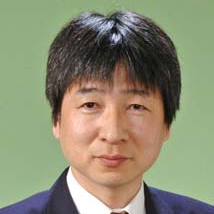Piezoelectric Actuators and Transducers: Materials, Design, Control and Applications—2nd Edition
A special issue of Actuators (ISSN 2076-0825). This special issue belongs to the section "Actuator Materials".
Deadline for manuscript submissions: closed (15 January 2024) | Viewed by 6150
Special Issue Editor
Interests: piezoelectric actuator; piezoelectric mover; control of piezoelectric actuator; driver for piezoelectric actuator; near-field ultrasonic levitation; vibration-assisted machining
Special Issues, Collections and Topics in MDPI journals
Special Issue Information
Dear Colleagues,
Piezoelectric actuators are often used in precision positioning devices because of their nanometer-order resolution. In addition, they are small and light, and generate a large blocking force. On the other hand, the deformation of the piezoelectric actuators is generally limited to several tens of micrometers. In order to overcome their disadvantages, they are often combined with a mechanism to enlarge the movable range by accumulating minute motions. Since hysteresis and creep also deteriorate the performance of the piezoelectric actuators, the displacement, supplied electric charge, or driving current are fed back for closed-loop or sensor-less control methods. Some models that compensate for the hysteresis have also been studied. Smart structures with collocated piezoelectric composites can suppress vibration. These developments are expanding, and their applications in science, technology, precision engineering, and industry (such as material science, space science, nanotechnology, biotechnology, precision machining, and semiconductor production) are abundant. This Special Issue will collect contributions focused on (but not limited to) the following topics:
- piezoelectric positioners, movers, and motors;
- driver;
- control strategy;
- modeling/simulation;
- energy harvesting;
- piezoelectric composites and smart structures;
- piezoelectric and structural health monitoring;
- near-field ultrasonic levitation;
- applications in science, technology, precision engineering, and industry.
Prof. Dr. Katsushi Furutani
Guest Editor
Manuscript Submission Information
Manuscripts should be submitted online at www.mdpi.com by registering and logging in to this website. Once you are registered, click here to go to the submission form. Manuscripts can be submitted until the deadline. All submissions that pass pre-check are peer-reviewed. Accepted papers will be published continuously in the journal (as soon as accepted) and will be listed together on the special issue website. Research articles, review articles as well as short communications are invited. For planned papers, a title and short abstract (about 100 words) can be sent to the Editorial Office for announcement on this website.
Submitted manuscripts should not have been published previously, nor be under consideration for publication elsewhere (except conference proceedings papers). All manuscripts are thoroughly refereed through a single-blind peer-review process. A guide for authors and other relevant information for submission of manuscripts is available on the Instructions for Authors page. Actuators is an international peer-reviewed open access monthly journal published by MDPI.
Please visit the Instructions for Authors page before submitting a manuscript. The Article Processing Charge (APC) for publication in this open access journal is 2400 CHF (Swiss Francs). Submitted papers should be well formatted and use good English. Authors may use MDPI's English editing service prior to publication or during author revisions.
Keywords
- piezoelectric positioners, movers, and motors
- driver
- control strategy
- modeling/simulation
- energy harvesting
- piezoelectric composites and smart structures
- piezoelectric and structural health monitoring
- near-field ultrasonic levitation
- applications in science, technology, precision engineering, and industry
Benefits of Publishing in a Special Issue
- Ease of navigation: Grouping papers by topic helps scholars navigate broad scope journals more efficiently.
- Greater discoverability: Special Issues support the reach and impact of scientific research. Articles in Special Issues are more discoverable and cited more frequently.
- Expansion of research network: Special Issues facilitate connections among authors, fostering scientific collaborations.
- External promotion: Articles in Special Issues are often promoted through the journal's social media, increasing their visibility.
- e-Book format: Special Issues with more than 10 articles can be published as dedicated e-books, ensuring wide and rapid dissemination.
Further information on MDPI's Special Issue polices can be found here.





